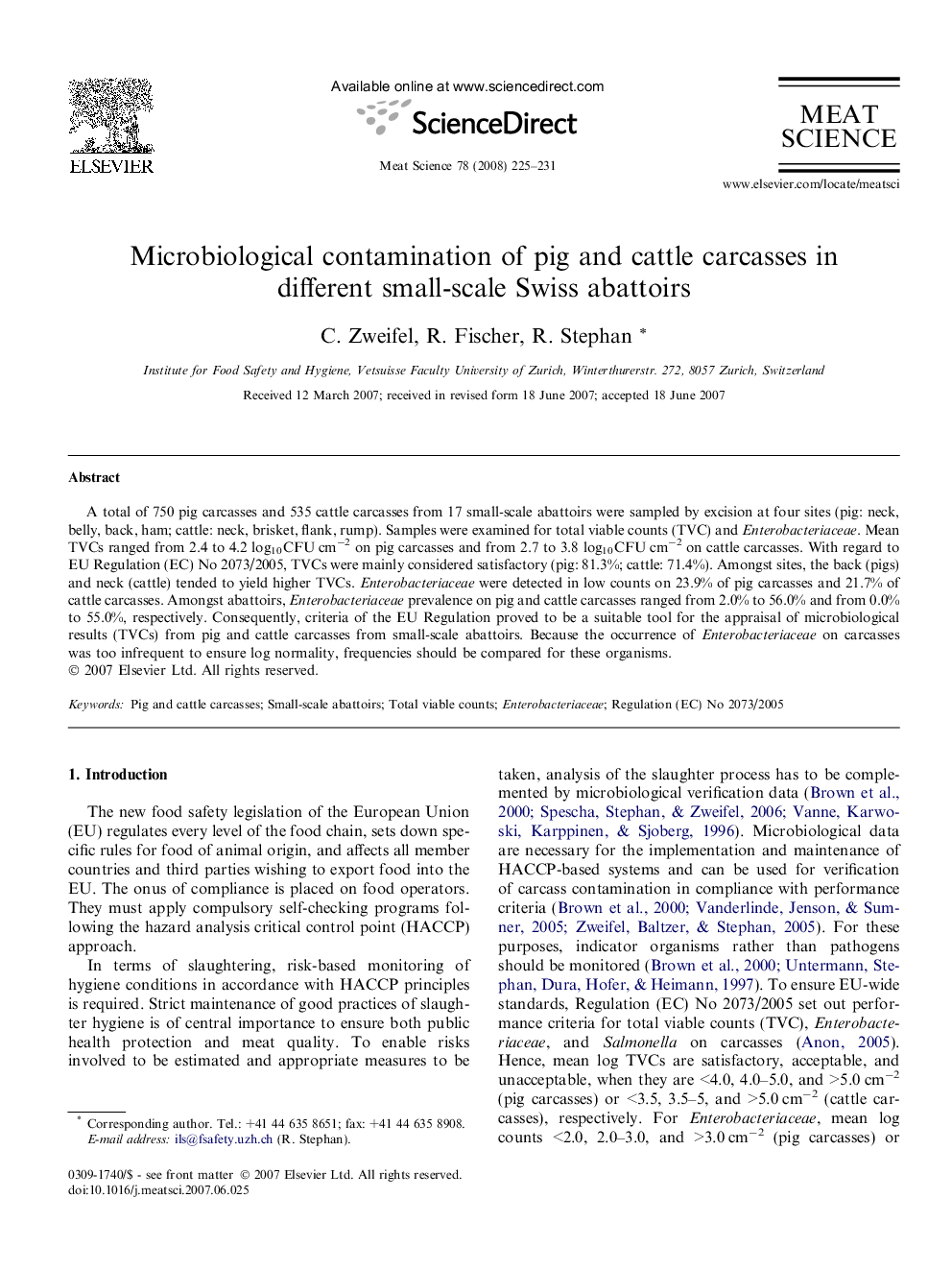| Article ID | Journal | Published Year | Pages | File Type |
|---|---|---|---|---|
| 2451725 | Meat Science | 2008 | 7 Pages |
A total of 750 pig carcasses and 535 cattle carcasses from 17 small-scale abattoirs were sampled by excision at four sites (pig: neck, belly, back, ham; cattle: neck, brisket, flank, rump). Samples were examined for total viable counts (TVC) and Enterobacteriaceae. Mean TVCs ranged from 2.4 to 4.2 log10 CFU cm−2 on pig carcasses and from 2.7 to 3.8 log10 CFU cm−2 on cattle carcasses. With regard to EU Regulation (EC) No 2073/2005, TVCs were mainly considered satisfactory (pig: 81.3%; cattle: 71.4%). Amongst sites, the back (pigs) and neck (cattle) tended to yield higher TVCs. Enterobacteriaceae were detected in low counts on 23.9% of pig carcasses and 21.7% of cattle carcasses. Amongst abattoirs, Enterobacteriaceae prevalence on pig and cattle carcasses ranged from 2.0% to 56.0% and from 0.0% to 55.0%, respectively. Consequently, criteria of the EU Regulation proved to be a suitable tool for the appraisal of microbiological results (TVCs) from pig and cattle carcasses from small-scale abattoirs. Because the occurrence of Enterobacteriaceae on carcasses was too infrequent to ensure log normality, frequencies should be compared for these organisms.
